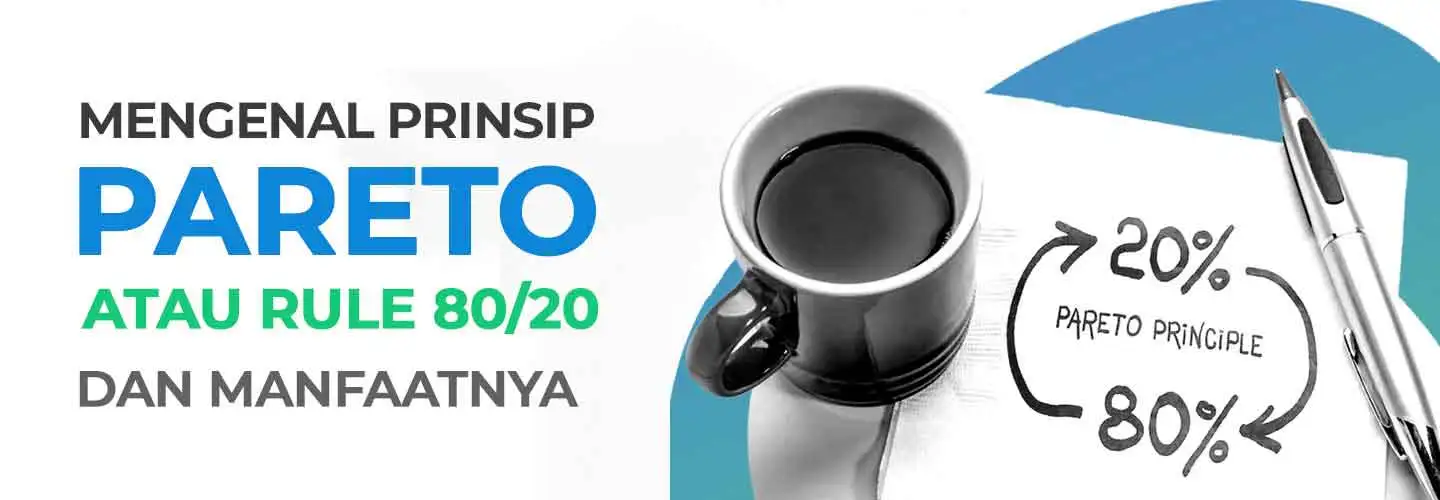Pareto Principle: Definition, Use, and Benefits for Business

The Pareto principle is a term in several industries and businesses that is also known as the 80/20 rule.
This Pareto principle has been used by many people from different types of industries and businesses to prioritize. The goal is to be more productive at work and even used to observe things in general.
For example, when you come to the office in the morning and check your email. If you can't prioritize your work, it's possible that those emails will just be left unanswered.
That's why this Pareto principle is needed and must be learned by every worker. Here is an explanation and summary of what the Pareto principle is, its uses, and benefits.
Understanding the Pareto Principle
Quoted from Asana, the Pareto principle is a rule that explains that 80% of the results/consequences you get come from 20% of the causes you create. That's why this principle is also called the 80/20 rule.
The Pareto principle can be applied in various types of businesses such as manufacturing, management, and human resources or HR. In business, the 80/20 rule can mean that 20% of staff effort/work can provide 80% of the results or profits for the business.
Quoting Hubspot, the Pareto principle was first put forward by Vilfredo Pareto, an Economist in early 1906 when he studied the distribution of wealth in Italy.
Vilfredo Pareto's observations stated that 80% of the land in Italy was owned by only 20% of the population. Not only for this case, Pareto later realized that the 80/20 rule also occurs in the scope of productivity.
In other words, the 80/20 rule in the Pareto principle is not a mathematical formula and numbers that can be assessed. Rather, the 80/20 rule is a form of relationship between effort and the results you will get.
It should be noted that this principle can be observed in general and is not only used in business. In addition to the 80/20 rule, the Pareto principle is also known by various other names, such as the law of the vital few and the principle of factor sparsity.
Using the Pareto Principle
To be able to maximize the use of the Pareto principle, you need to know how it works first. In each use for a particular purpose, the Pareto principle can work differently.
The thing to note before starting to use this principle is to understand that the Pareto principle does not suggest that you work less and less.
Here are some examples of the use of the Pareto principle or 80/20 rule in several interests:
1. Productivity
The first step that must be taken when applying the Pareto principle is to make a list of tasks or work that must be completed within a certain period of time. You must also add who the person in charge or PIC is in each section if you are in charge of delegating work.
After making the list of jobs, you must analyze which jobs have a significant impact on the final result. In this process, you need to pay attention to the smallest details because it does not mean that tasks that seem small do not have a big impact.
In addition to being used to maximize team work productivity, the Pareto principle can also be used for your personal to-do list.
2. Making Decisions
The Pareto principle can also be used to make the right decisions in the problem-solving process. The use of the Pareto principle in this case is to prioritize the solutions that you can use.
You can follow the steps below to use the Pareto principle in making important decisions.
- Identify the problems you and your team are facing. By identifying the existing problems in more detail and clearly, it will be easier to map out the solutions.
- Identify the causes of the problems. You can use the 5 Why method or process to see the causes of the problems.
- Categorize the problems you and your team are facing into several groups. If there are several problems that fall into the same category, there is an opportunity to create one solution for several problems at once.
- Give an impact value to each category of problems that you have. This value can be a number 1-10 or use a value that is used by your company/business in assessing impact.
- Develop a problem-solving plan by focusing on the 20% of problems that have the greatest impact on the business. When you know the core problem, you can develop the main solution with 80% results.
3. Quality Control
Reporting from Better Up, the Pareto principle in quality control is usually used to create a diagram that can provide a visual representation of 20% of problems that may impact 80% of the process.
That is why the Pareto principle is very useful in quality control and management in business. By using this principle in making diagrams, you can identify all the elements that form the problem and generate RoR (Rate of Return).
Benefits of Using the Pareto Principle
The main benefit of using the Pareto principle is that you can make a maximum impact with less effort.
If applied in business and work, you can make your team work more effectively and focused. The way is simply by applying the 80/20 rule in prioritizing your work and team. Some other benefits of the Pareto principle are as follows:
- making clear priorities and delegation of work;
- increasing productivity;
- creating a more effective workload;
- forming a more focused strategy.
That is the importance of using the Pareto principle in business. If you have the authority to make decisions and solve problems in your organization and business, it is important to be able to learn this principle.
As your problem solving and decision making skills improve, you will produce more effective results with less effort. Of course, it will be very beneficial for you and your team.
Want to learn more about problem solving and decision making? Now is the right time. Enroll in the Problem Solving & Decision Making program from prasmul-eli and develop your skills!


